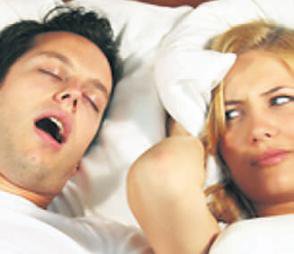Snoring and Sleep Apnea
People who snore loudly are often the target of bad jokes and middle of the night elbow thrusts; but snoring is no laughing matter. While loud disruptive snoring is at best a social problem that may strain relationships, for many men, women and even children, loud habitual snoring may signal a potentially life threatening disorder: obstructive sleep apnea, or OSA.
Snoring Is Not Necessarily Sleep Apnea

It is important to distinguish between snoring and OSA. Many people snore. It's estimated that approximately 30% to 50% of the US population snore at one time or another, some significantly. Everyone has heard stories of men and women whose snoring can be heard rooms away from where they are sleeping.
Snoring of this magnitude can cause several problems, including marital discord, sleep disturbances and waking episodes sometimes caused by one's own snoring. But, snoring does not always equal OSA; sometimes it is only a social inconvenience. Still, even a social inconvenience can require treatment, and there are several options available to chronic snorers.
Identifying and Treating Sleep Apnea
Unlike simple snoring, obstructive sleep apnea is a potentially life-threatening condition that requires medical attention. The risks of undiagnosed OSA include heart attack, stroke, irregular heartbeat, high blood pressure, heart disease and decreased libido. In addition, OSA causes daytime drowsiness that can result in accidents, lost productivity and interpersonal relationship problems. The symptoms may be mild, moderate or severe.
Sleep apnea is fairly common. One in five adults has at least mild sleep apnea and one in 15 adults has at least moderate sleep apnea. OSA also affects 1% to 3% of children. During sleep, the upper airway can be obstructed by excess tissue, large tonsils and/or a large tongue. Also contributing to the problem may be the airway muscles, which relax and collapse during sleep, nasal passages, and the position of the jaw.
The cessation of breathing, or "apnea," brought about by these factors initiates impulses from the brain to awaken the person just enough to restart the breathing process.This cycle repeats itself many times during the night and may result in sleep deprivation and a number of health-related problems. Sleep apnea is generally defined as the presence of more than 30 apneas during a seven hour sleep. In severe cases, periods of not breathing may last for as long as 60 to 90 seconds and may recur up to 500 times a night.